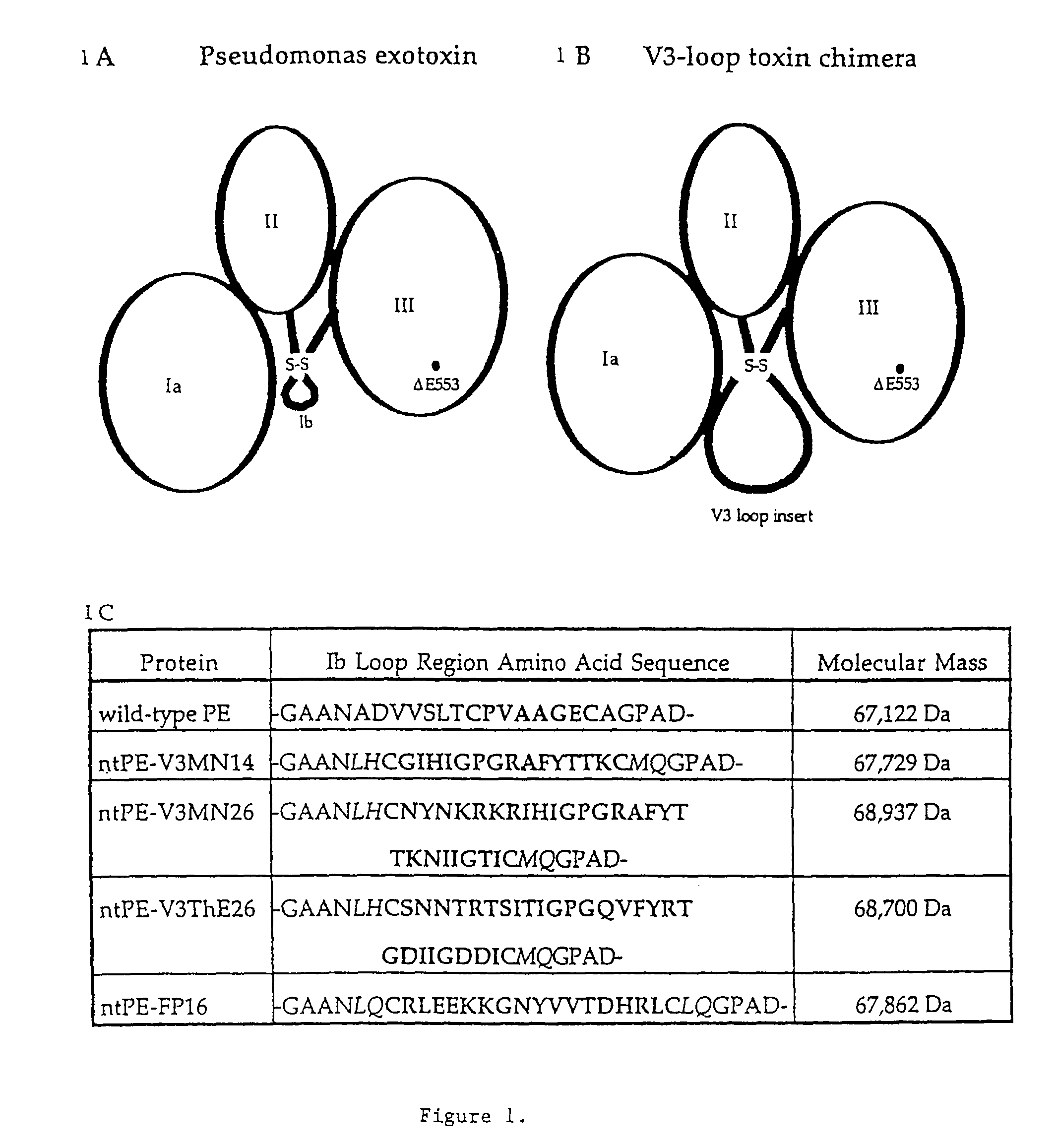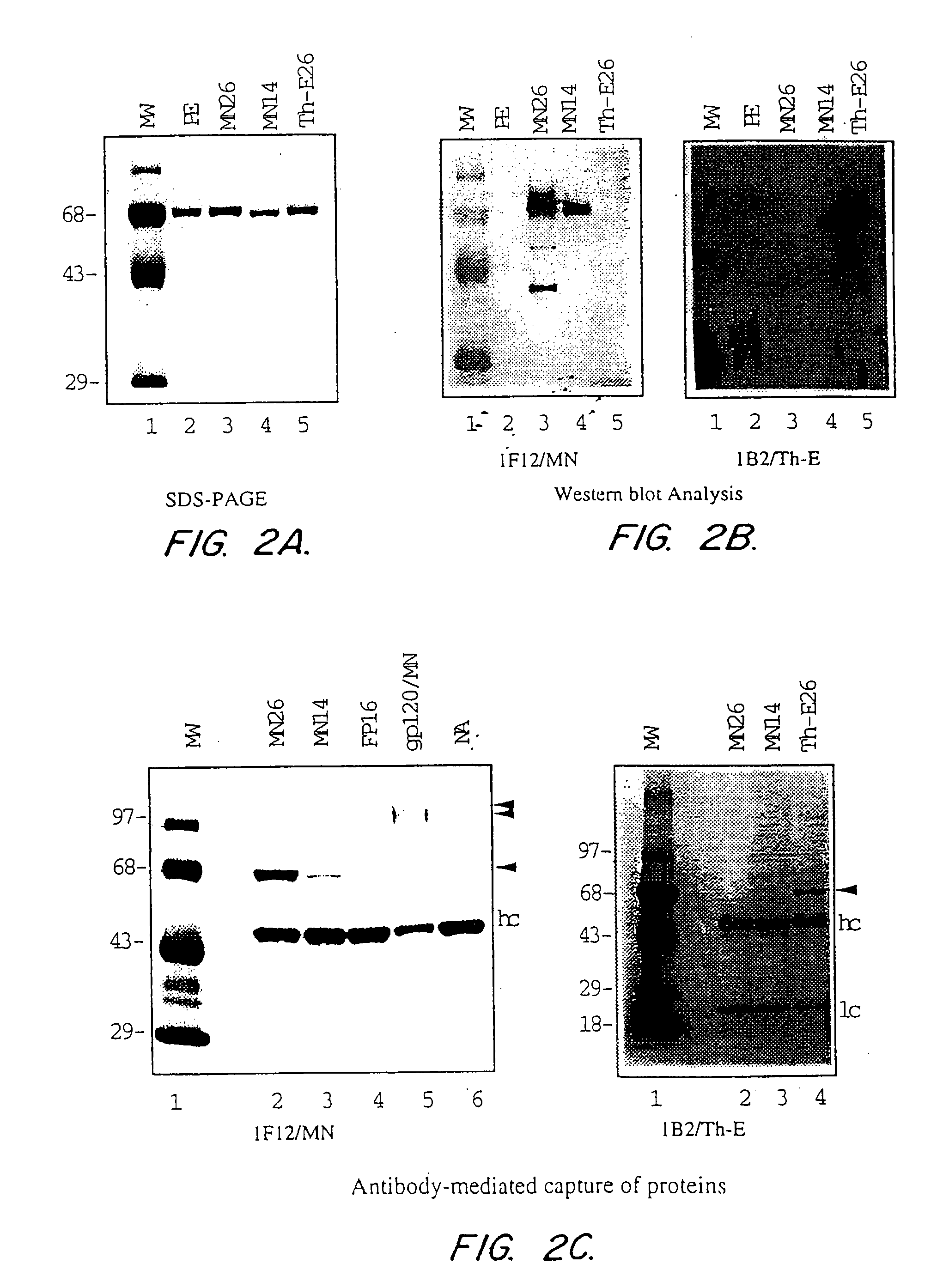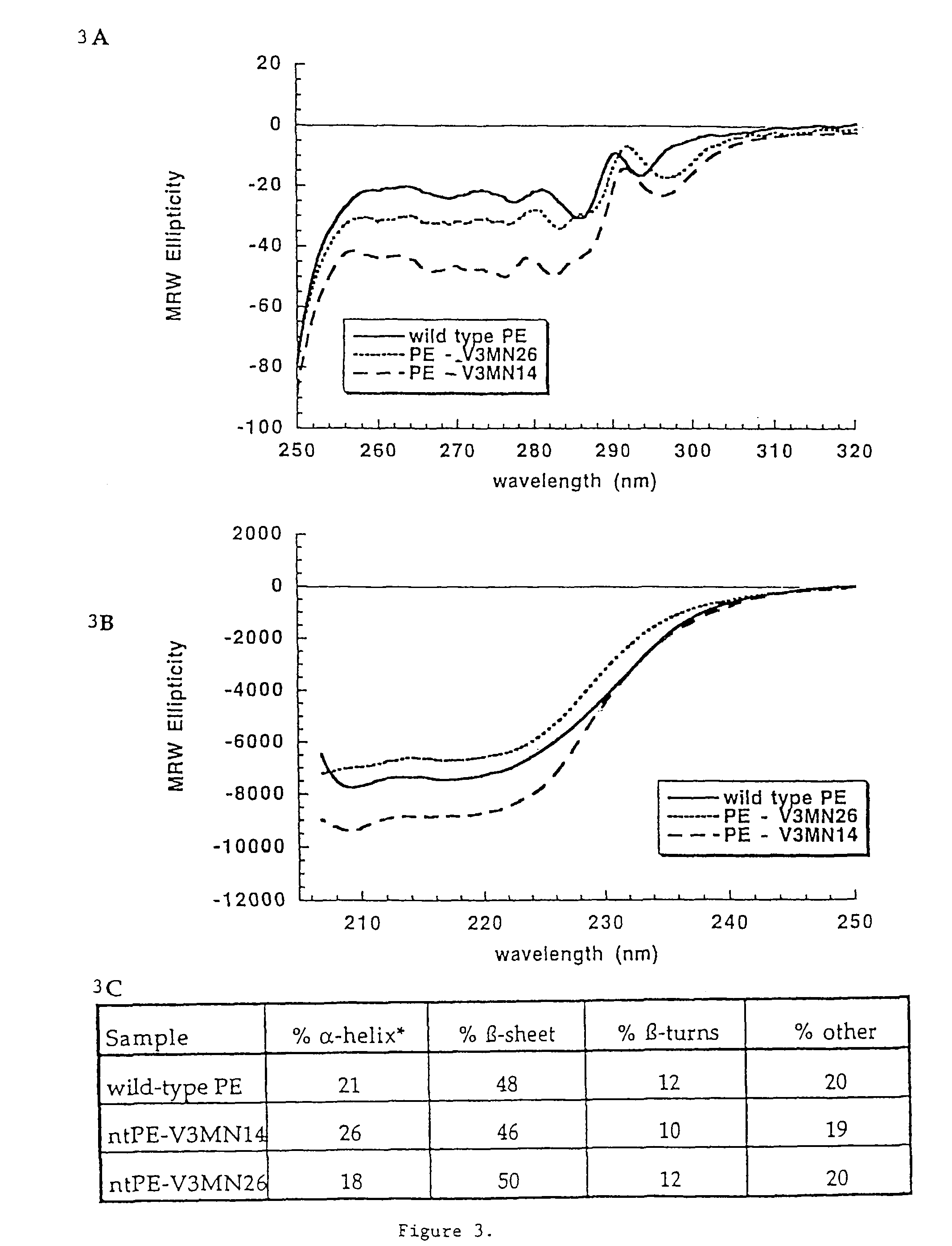Pseudomonas exotoxin A-like chimeric immunogens
a chimeric immunogen and exotoxin technology, applied in the field of chimeric proteins and immunology, can solve the problems of insufficient complexity of subunit vaccines to generate an appropriate immune response, ineffective global protection of subunit vaccines eliciting strain-specific immunity, and inability to elicit secretory immune responses of immunogens
- Summary
- Abstract
- Description
- Claims
- Application Information
AI Technical Summary
Benefits of technology
Problems solved by technology
Method used
Image
Examples
examples
I. Construction of PE-Like Chimeric Immunogens
[0211]To generate chimeric proteins, the subdomain Ib of ntPE was replaced with V3 loop sequences from either an MN (subtype B) or Thai-E subtype strain of HIV-1. The MN sequence is from a T-cell-tropic strain while the Thai-E sequence comes from a macrophage-tropic strain.
[0212]Wild-type (WT) PE is composed of 613 amino acids and has a molecular mass of 67,122 Da. Deletion of a glutamic acid 553 (Δ553) results in a non-toxic version of PE (Lukac, M., et al., 1988, Infect and Immun 56:3095-3098), referred to as ntPE.
[0213]Plasmids were constructed by inserting oligonucleotide duplexes encoding V3 loop sequences into a new PE-based vector that was designed with a novel PstI site. In an effort to produce a V3 loop of similar topology to that found in gp120, the 14 or 26 amino acid inserts were flanked by cysteine residues (FIG. 1C—bold type). Construction of the novel vector resulted in several changes in the amino acid sequence of ntPE ne...
PUM
| Property | Measurement | Unit |
|---|---|---|
| concentrations | aaaaa | aaaaa |
| Tm | aaaaa | aaaaa |
| molecular mass | aaaaa | aaaaa |
Abstract
Description
Claims
Application Information
 Login to View More
Login to View More - R&D
- Intellectual Property
- Life Sciences
- Materials
- Tech Scout
- Unparalleled Data Quality
- Higher Quality Content
- 60% Fewer Hallucinations
Browse by: Latest US Patents, China's latest patents, Technical Efficacy Thesaurus, Application Domain, Technology Topic, Popular Technical Reports.
© 2025 PatSnap. All rights reserved.Legal|Privacy policy|Modern Slavery Act Transparency Statement|Sitemap|About US| Contact US: help@patsnap.com



